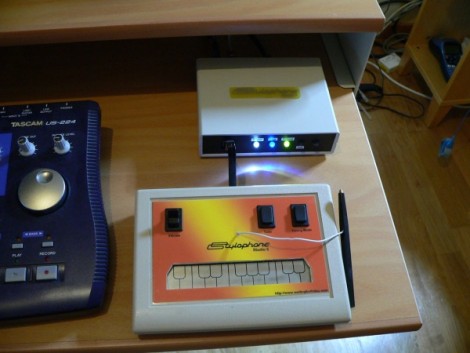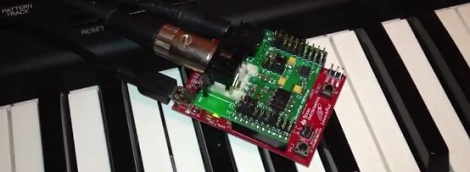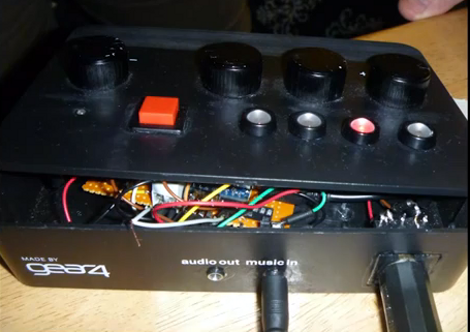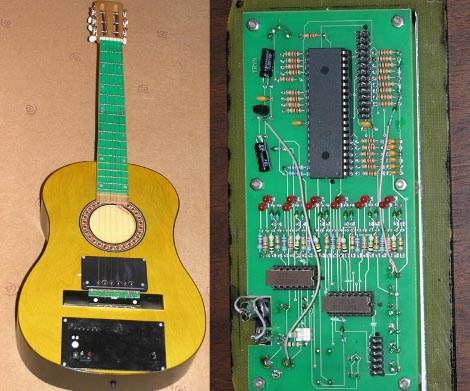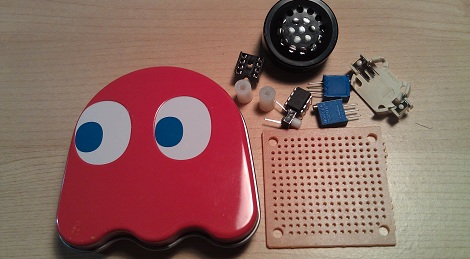
Since it’s the holidays and pine trees are being cut down and installed in living rooms all around the world, [Jarv] though it would be a good idea to make a musical Christmas ornament. He needed to keep some of his geek cred, so [Jarv] decided to build a musical [Blinky] ghost from Pacman.
A few weeks ago, [Jarv] sent in his musical greeting card that uses a minimal amount of parts to play a short 8-bit tune. His project was based around an ATtiny85 and sounded pretty good. For his [Blinky] ornament, [Jarv] used a similar circuit along with some old-school Pacman songs that sound great.
[Jarv] found a [Blinky] candy tin and after dispensing with all that pressed sugar began work on his build. In keeping with his greeting card, everything is very minimal. Just a speaker, ATtiny85, and button make up the build. Pressing the button cycles through three songs from Ms. Pacman. The result sounds uncannily like a vintage arcade game, so be sure to check out the video after the break.


